Horror of Srebrenica's mass graves from the air
- Published
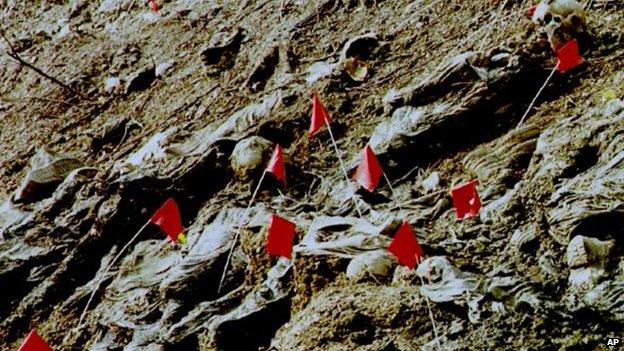
Jamie Adam was one of the first people to gain aerial access to the site of the Srebrenica massacre, as part of the UN's de-mining programme in Bosnia in 1996. Here he gives a compelling account of his experiences.
I was brought in by the UN in early 1996 to help set up the de-mining programme in Bosnia-Hercegovina, as deputy head of the overall programme and head of the Mine Action Centre Sarajevo Region.
At this stage, most of the utilities were cut off or intermittent around the country because everything was heavily mined and booby-trapped.
Initially, we had to go through several minefields just to get into our temporary offices in a bombed-out factory near the airport.
One of the most abiding memories of my tour, though, was having to go out one day to survey all the mass atrocity sites in Bosnia-Hercegovina.
We were trying to work out a safe way of getting investigators for the International Criminal Tribunal for the former Yugoslavia (ICTY) in without being blown up, as many of the sites were camouflaged and heavily booby-trapped.
Flattened houses
A representative of the ICTY and I took a US helicopter to look at each site and discuss recommendations, plus several combat cameramen to record evidence. A second helicopter full of assorted personnel came along "for the ride".
Flying over villages at low level, you could see where certain individual houses had been selectively flattened - reportedly often by herding the family inside with the gas on, and then throwing a grenade in.
I'd never seen houses reduced to a mere plinth before.
It varied from village to village as to which ethnic grouping had suffered - they were all as bad as each other. In some places, you could see where large numbers of people had been lined up against a wall and shot.
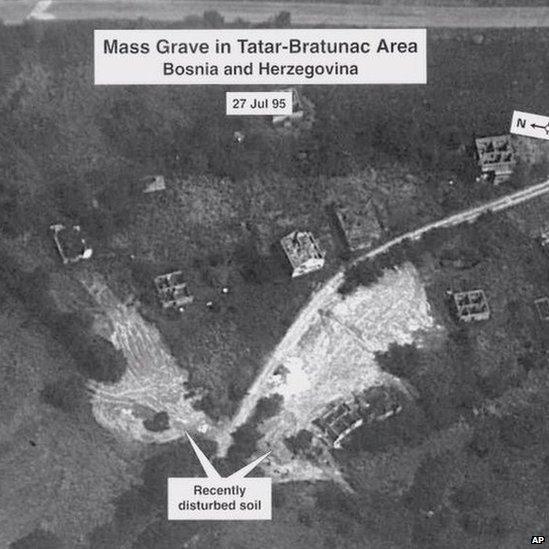
This aerial shot of a site near Srebrenica was shown as evidence during the trial of Bosnian Serb Army Gen Radislav Krstic
Srebrenica was by far the worst.
For several kilometres, you could see evidence of where huge numbers had been herded up a dead-end valley (after reportedly being told it was a safe route out of the area) and then machine-gunned.
The whole valley was scattered with personal belongings and remains of clothing.
There were no bodies - carrion would have removed any remains left by then - but there were many mass graves.
These had been camouflaged quite carefully with piles of logs so they would have been hard to spot from the ground. It was only from the air that the signs of recent digging were clearly visible underneath.
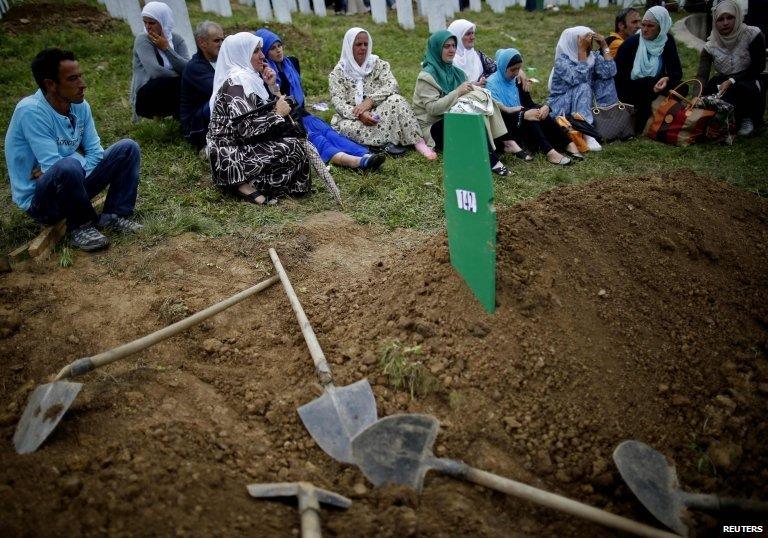
Newly-identified victims of the Srebrenica massacre were buried at a mass funeral in July in Potocari
It was clear that some really, really bad stuff had happened here.
The people in the second helicopter, who had been very gung ho at the start of the day, were absolutely silent later on. I suspect that they, like me, still remember that view of Srebrenica even now.
I still, somewhere, have some of the photos I took of Srebrenica from the air, and for me it remains the nadir of humanity in the Balkans.
Jamie Adam was the deputy head of the UN Mine Action Centre for Bosnia-Hercegovina in Sarajevo in 1996, and went on to work for Nato as a Balkans specialist
- Published17 May 2012
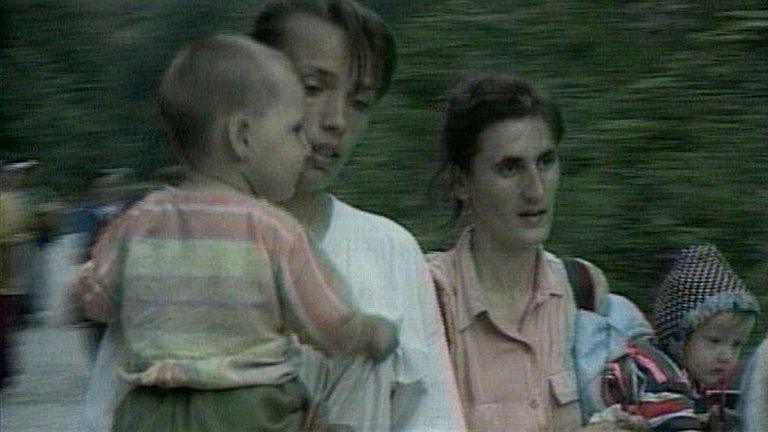
- Published11 July 2010
- Published19 May 2014
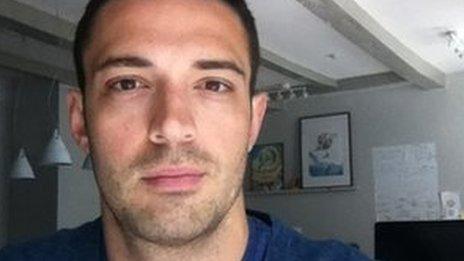
- Published3 June 2011